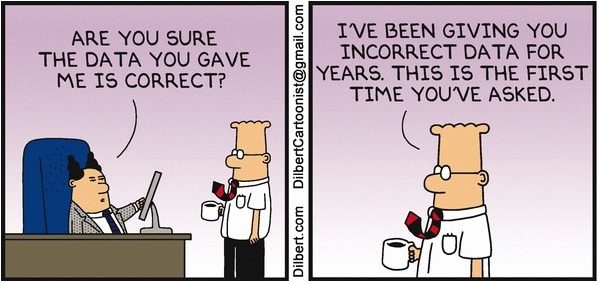A data-driven culture does not happen overnight. Very deliberate & tangible steps need to be taken to foster a data-oriented culture in the following order:
1) A single source of truth: Data sources in large organizations are often siloed in independent systems. Staff can pull the same metric from different systems and get different numbers. A single source of truth can be a large investment, but the drag on competitiveness from inconsistent data will only worsen as the industry moves towards greater precision. While this investment takes place, the data team can add great value by acting as data connoisseurs, knowing what’s available and what to recommend for each problem.
2) Standard data dictionary: Data scientists and business managers need to agree on a data dictionary with clear, unambiguous and agreed definitions to help team members with different areas of expertise get on the same page.
3) Broad access to data: The entire organization, not just data scientists, needs access to data. Without it, you cannot achieve collective business expertise in analysing data. This requires a simple self-service reporting system with the right governance and access levels based on the needs of customer service, and product & marketing specialists.
4) Data Literacy: With good access to data must come good understanding of data. Provide compulsory training to reinforce basic data literacy across the whole employee base. There are 3 basic subjects which every employee should be comfortable with:
- Descriptive statistics: Basic ways of summarizing data (e.g. mean, percentiles, range or standard deviation) and knowing when each is appropriate.
- Data visualization: Clear communication of insights or concepts to speed up comprehension & collective problem-solving within the team.
- Inferential statistical tests: To help detect, for instance, if a difference in sales between weeks is significant or if it is just random variation.
5) Decision making: Many teams are governed by HiPPOs (highest paid person’s opinions). This can be especially bad when HiPPOs decide based on instinct or experience, when the choices could have been tested and supported with statistical proof. One way to counteract this is to cultivate experimentation with A/B testing. For example, in order to decide which website design or marketing messaging is most effective, managers can determine success metrics and sample sizes, and let the A/B tests run and let the data speak for itself.
6) Once the five basics above are partially in place, an internal hackathon does wonders to energize the organization and take it to a whole new level:
- Start with a customer problem (Problem Derived Innovation Analytics) and solve it through various design and analytical stages.
- Be deeply cross-functional, by involving not only data scientists but IT, front-liners, brand leaders, product owners, graphic designers, customer service representatives, and coders.
- “Everything can and should be challenged” should be the guiding belief for all participants.
- Create minimum viable products, and not just PowerPoint slides –ideas should be materialized.
- Keep the momentum going after the hackathon, with reward mechanisms which encourage employees to report on progress and to adopt new behaviours.
7) After implementing these steps successfully, senior leadership can start evangelizing an automation and intelligence first imperative: Each problem-solving session must begin with A.I. (Similarly, start-ups in emerging markets have a mobile-first imperative).
About the author
Pedro URIA RECIO is thought-leader in artificial intelligence, data analytics and digital marketing. His career has encompassed building, leading and mentoring diverse high-performing teams, the development of marketing and analytics strategy, commercial leadership with P&L ownership, leadership of transformational programs and management consulting.

